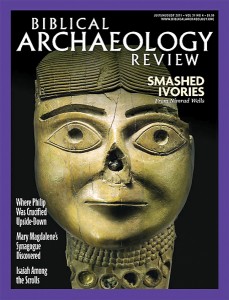
One of the most strongly felt currents in contemporary ancient Near Eastern archaeology is an almost automatic aversion on the part of most practitioners in the field to the very term “Biblical Archaeology.” So much so, very few practicing archaeologists are willing to identify themselves as “biblical archaeologists,” in light of feeling that the very name denotes an antiquated, parochial and ideologically driven endeavor. Thus, for example, several years ago, the editors of the journal Biblical Archaeologist expressed a wish to change the name of the journal to a more “modern” and up-to-date name (Near Eastern Archaeology) and held a poll among their readers. Despite the fact that there was an overall majority among the readers (of which, clearly, many are not professional archaeologists) to retain the old name, the editors changed the name to the suggested (and currently used) name.
It would seem then that the very term Biblical Archaeology and what it represents has been undermined, and in many circles is viewed in a very negative manner ...
I believe that ... one of the central roles that the professional archaeologist has [is] to serve as a steward of the past, in a manner that evokes interest and meaning for the general public. A modern and updated approach to Biblical Archaeology (with capital B and A) can insure both a cutting-edge scientific approach to the study of the ancient Near East, and at the same time, it can spark the interest, fascination and imagination of the public—the true constituency of our work! ...
Already a library member? Log in here.
Institution user? Log in with your IP address.

